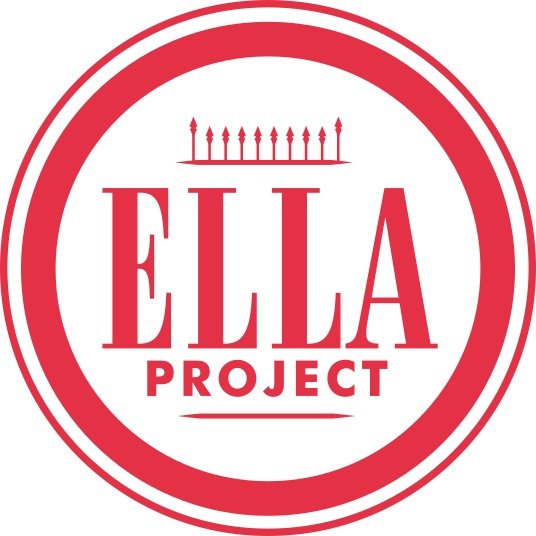The Ella Project’s French Connection
By Jann Darsie
The Ella Project has joined forces with Villa Albertine, the French Institute for Language and Culture, a division of the French Embassy in the United States. New Orleans is one of 10 U.S. cities with a Villa Albertine office, housed within the Consulate General of France.
Villa Albertine offers artists’ residencies as well as professional development programs to French artists. The Ella Project is one of the local organizations helping the visiting artists make connections they need to meet their residency goals.
These cross-cultural exchanges benefit everyone, according to Ella Project co-founder Gene Meneray.
“While the visiting French artists are seeking ways to explore their own growth, they also contribute to the local arts scene, making it more internationally aware,” Meneray said. “The Ella Project can also benefit from getting fresh perspectives and introducing these to our local artists.”
One of the current residents, singer-songwriter Mélissa Laveaux, met with the Ella Project as a part of the networking and research opportunities available to her through Villa Albertine.
Laveaux, a Canadian of Haitian descent, is in New Orleans following the anthropological work of Zora Neale Hurston to “… connect the vodou songs of my Haitian heritage to the hoodoo songs of the African diasporas in the U.S. As even Hurston was aware of the scarcity of reliable collections of African-American folklore by Black ethnographers.” Hurston, a central figure in the Harlem Renaissance, was commissioned to come to New Orleans in 1928 to collect African-American lore.
New Orleans has been conducive to Laveaux’s research. “This is the most Caribbean city in the U.S.,” she said. “It has its own rhythm, and I see it as a person, with a repurposed lens. It is more slow-paced and organic than my home base, Paris.”
She has toured widely, performing in 45 countries, most recently in Brazil, Canada, South Africa, Zimbabwe, Botswana and Lesotho. In 2024, she was knighted Chevalière des Arts et Lettres by the French government. Her fourth studio album, “Mama Forgot Her Name Was Miracle,” was released in 2022 under her own label “Twanèt”.
Laveaux has a distinctive, soulful style on guitar as well as vocals. She started playing the classical guitar at age 12. “My father played guitar as a hobby, so it was just logical that would be my first instrument,” she said.
However, it was not a smooth start. “People kept telling me I couldn’t just learn on my own, that I needed to take lessons,” she said. “So that was a bit discouraging, and I stopped for a time.”
But she persevered, and by the time she was in high school, she was not only playing but writing songs, including one for her graduating class. A local rapper had asked her to collaborate, and by the time she got to college, she was writing more and more. Her first major performance on a big stage was at Ladyfest, a global festival featuring the work of women artists, with a major event in Ottawa, Canada.
During Laveaux’s final performance of her New Orleans residency, the Ella Project also caught up with percussionist Tiss Rodriguez, who was a Villa Albertine resident in 2023. His time in New Orleans, he said, had a profound effect on him both as an artist and as a person.
“Suddenly, I found a lineage and a heritage,” he said. “I feel centered and grounded here — so much so that I bought a house here and plan to divide my time between New Orleans and Paris.”
Cultural Attaché Jacques Baran, director of the New Orleans Villa Albertine, and Gabi Grenier, the program’s artistic and audiovisual project manager, both pointed to Rodriguez as one example of the ongoing influence of the Villa Albertine residencies.
Although the program has offices in 10 major U.S. cities, artists may apply to go anywhere in the country, even places with no consulate. “Of course, the added value of locating in one of the 10 cities is that we know the cultural scene and can facilitate connections and opportunities to meet with counterparts,” Baran said. Because the Villa Albertine residencies are research-based, as opposed to having to produce artwork, these contacts are especially important.
Baran and Grenier gave a number of examples of reciprocal meetings and collaborations. Notable was Sélène Sainte-Aimé (2022 resident) who went on tour with local artists after her residency to the Atlanta Jazz Festival and to perform in Washington, D.C. And Smaïl Kanouté (2023 resident), who has been working with the Black Masking Indians, Big Chief Darryl Montana and Big Queen Dianne Honoré, of the Yellow Pocahontas Hunters tribe. He produced a short movie that was filmed with two New Orleans-based artists: Camille Lenain and Varvara Degtiarenko.
The Ella Project’s Meneray agreed that the Villa Albertine residencies are ripe for creative collaborations. He noted that Ella’s mission statement begins: “We believe in the importance of the culture of New Orleans and Louisiana …” This dovetails with the Villa Albertine’s stated reasons to locate an office in New Orleans: the city’s rich cultural traditions and its resilience to disasters.
As Villa Albertine enters its fifth season next year, the Ella Project is one more local organization that it can look to provide research and networking opportunities for French artists. These creative residents will undoubtedly take a part of New Orleans with them back to France.
For more information on Villa Albertine, visit the institute's website.
Notes From Ella is presented with funding from the New Orleans Jazz & Heritage Foundation.


